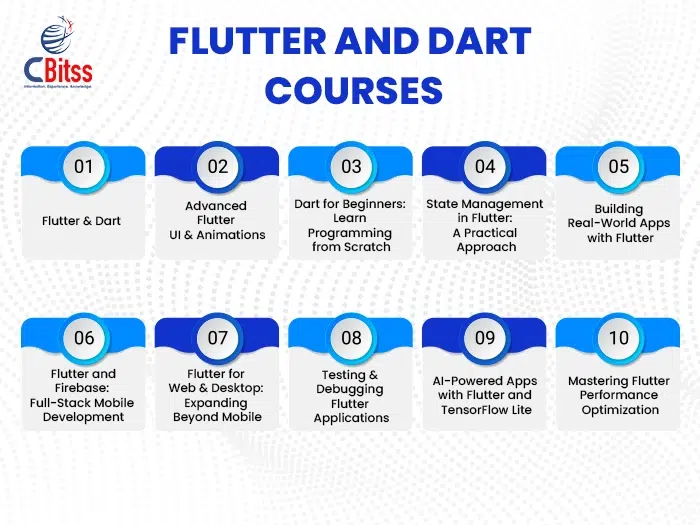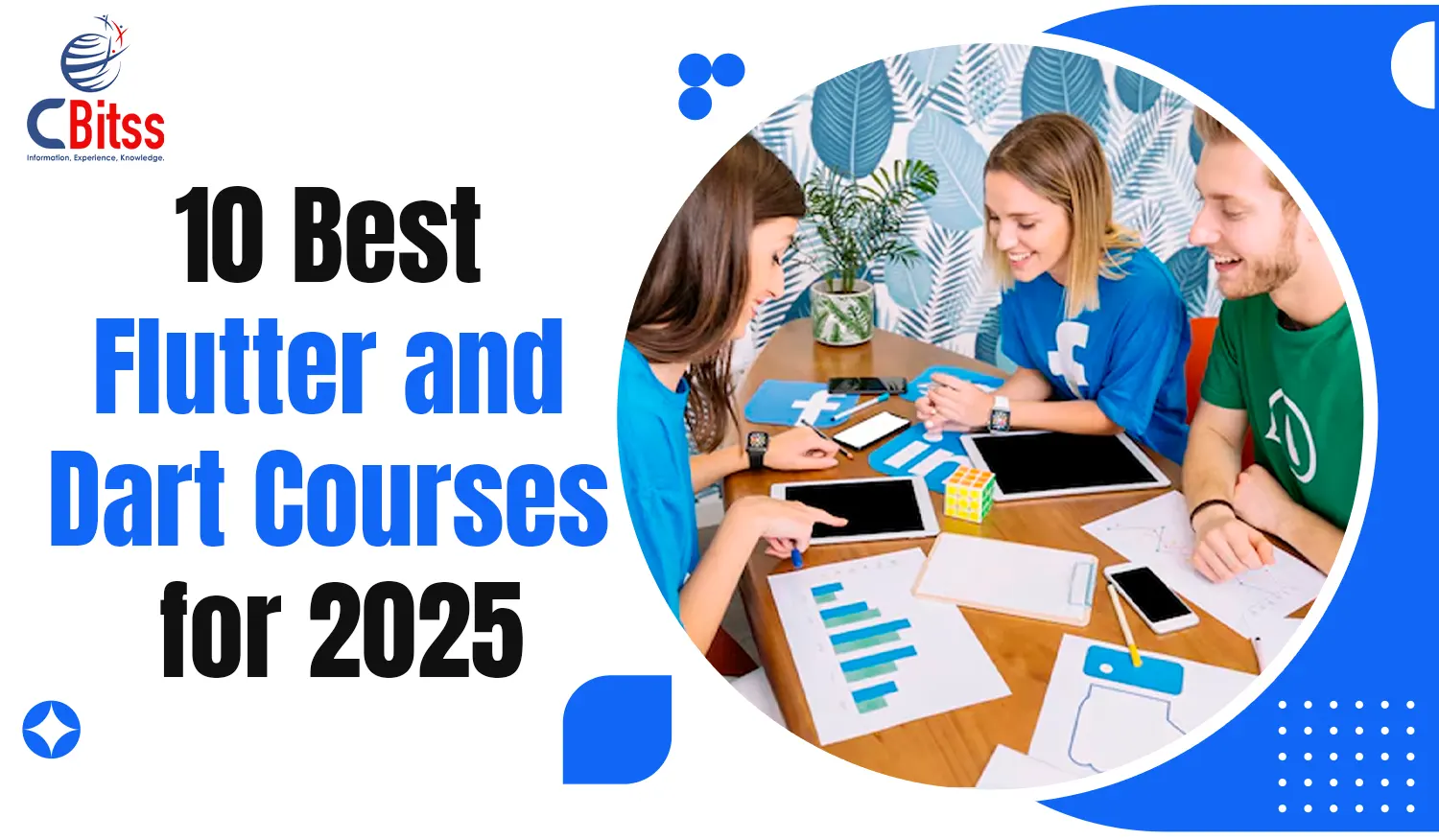Introduction
Mobile app development underwent a major transformation with Flutter and Dart as they allow developers to build high-performance applications across multiple platforms. The increasing need for proficient Flutter developers requires them to maintain their knowledge by keeping up with current technologies and best practices. We provide a list of the top courses for learning Flutter and Dart available in 2025 to support your development journey. Students can improve their skills and advance their careers through these courses, which provide thorough understanding, practical projects, and contemporary development methods.

1. Flutter & Dart: The Complete App Development Guide
Getting Started with Flutter and Dart
- Establish your Flutter and Dart development setup environment.
- Understanding Flutter architecture and how it works
- Basics of Dart programming language and syntax
Hands-on App Development
- Building fully functional mobile applications
- Implementing state management for better app scalability
- Working with navigation and integrating APIs
Debugging & Optimization
- Solving typical Flutter application challenges
- The most effective debugging tools and methods to boost productivity
2. Advanced Flutter UI & Animations
Creating Engaging User Interfaces
- Develop custom widgets and themes to improve your app’s visual design
- Developing flexible UI designs that adapt to various screen dimensions
Implementing Advanced Animations
- Developing smooth and engaging animations enhances user interaction with applications.
- The built-in animation tools in Flutter help improve app interaction experiences.
Material & Cupertino Design Guidelines
- I will explain shared design principles for Android and iOS platforms.
3. Dart for Beginners: Learn Programming from Scratch
Understanding Core Dart Concepts
- Grasp the basics of variables and functions alongside loop constructs and control flow mechanics.
- Mastering object-oriented programming with Dart
Advanced Dart Techniques
- Implementing null safety and memory management
- Asynchronous programming is achieved in Dart through the implementation of Futures and Streams.
4. State Management in Flutter: A Practical Approach
Choosing the Right State Management Solution
- Understanding various approaches: Provider, Riverpod, Bloc, and Redux
- Evaluation of state management techniques requires consideration of application complexity levels
Best Practices for State Management
- Developers should separate UI components from state logic to improve maintainability.
- Ensuring efficient and scalable state management strategies
5. Building Real-World Apps with Flutter
Developing Full-Scale Applications
- Building production-ready applications with Flutter
- Secure user access requires proper API integration and authentication methods.
- Database management techniques for data persistence
Optimizing App Performance
- Improving performance while decreasing app load times creates a better user experience.
6. Flutter and Firebase: Full-Stack Mobile Development
Integrating Firebase with Flutter
- Working with Firestore for real-time database management
- Implementing authentication and user management
- Sending push notifications and utilizing cloud functions
Ensuring Security in Flutter Applications
- Implementing best security practices for data protection
- Establishing secure authentication processes provides better protection for users.
7. Flutter for Web & Desktop: Expanding Beyond Mobile
Building Cross-Platform Applications
- The UI must be designed to function seamlessly across both web and desktop platforms.
Deployment & Hosting
- Deploying web applications using Firebase Hosting
- Utilizing native desktop support for Flutter applications
8. Testing & Debugging Flutter Applications
Implementing Comprehensive Testing Strategies
- Developers need to create unit tests alongside widget tests and integration tests.
Debugging and Automation
- Identifying and fixing common Flutter application errors
- Establishing continuous integration (CI/CD) with automated testing capabilities
9. AI-Powered Apps with Flutter and TensorFlow Lite
Leveraging AI in Mobile Apps
- Integrating machine learning capabilities into Flutter applications
Building AI-Enhanced Features
- The development of applications now includes features that process images and recognize speech as well as understand human language.
- TensorFlow Lite enables efficient AI model implementation on mobile devices.
10. Mastering Flutter Performance Optimization
Improving App Efficiency
- Performance optimization techniques help reduce app size and speed up load times.
Advanced Profiling and Debugging
- Use memory monitoring and optimization to enhance application responsiveness
- The Skia graphics engine enables fluid rendering and animation performance.
Final Thoughts
The combination of Flutter and Dart creates numerous career possibilities across mobile development as well as web and desktop platforms. Both beginners who want to start their development path and seasoned developers seeking to advance their abilities will find these courses deliver complete knowledge and practical skills to create elite applications. Continue your education journey while keeping up with emerging trends to start creating fantastic Flutter applications right now! Also to gain more knowledge you should be aware firstly of Flutter Training for Beginners to Advanced.


